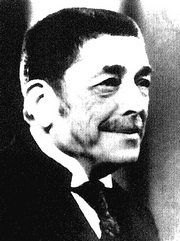|
Dr. Húmer Hültl (1868 – 1940) Hungarian surgeon, Húmer Hültl was born in 1868 in Fels?b?nya. Hültl studied in Budapest, earning his medical degree in 1891, and after surgical training he started to work as a surgeon in 1893.
By 1900, Dr. Hültl was the chief surgeon at the St. Stephen’s Hospital and later at the Sr. Rokus Hospital, and during WWI he was a commander of a Hungarian military hospital. Dr. Hültl’s attention to detail, careful asepsis (after Ignaz Semmelweis) and superb surgical technique earned him the moniker “The Paganini of the Knife”. Hültl was the first in his country to introduce the use of face masks, gloves, sterile cotton, and rubber gloves.
Dr. Hültl was very concerned about the consequences of spillage of gastrointestinal contents in the peritoneal cavity during surgery, covering all the walls of the cavity with sterile towels. At that time some surgical instruments had been invented to keep the edges of the intestines together while suturing. In 1907 Dr. Hültl envisioned a mechanical instrument that could place rows of staples transversely in the intestines thus avoiding spillage. With the aid of Victor Fisher, a German mechanical engineer, the first surgical stapler was constructed.
|

|
| This original instrument was very bulky and heavy, weighing close to 11 pounds, and used a “bicycle-chain” type of mechanism to push a crankshaft that would push the staples into the anvil to form “B” shaped staples. It placed four rows or staggered staples. This device was first used in surgery on May 9th, 1908. A later, lighter variation of the instrument was later created, with a different crankshaft and weighing 8 pounds. Images of these instruments are available here.
Not many of these instruments were sold, but Dr. Hültl had set the stage for the development of the modern surgical stapler. Even today we still use the basic principles of his surgical stapler: “B" shaped staples, staggered rows of staples, and attention to the avoidance of leakage through the staple line. All of this makes Dr. Hültl an integral part of the history of surgical stapling.
Sources:
1. "Húmer Hültl: The Father of the Surgical Stapler" Robicsek, F.& Konstantinov, I. J Med Biogr February 2001 9: 16-19
2. “Current Practice of Surgical Stapling" Ravitch, MM; Steichen, FM, 1991.
Original image courtesy of "Surgical Stapler Museum" at www.surgicalstaplermuseum.com
|



